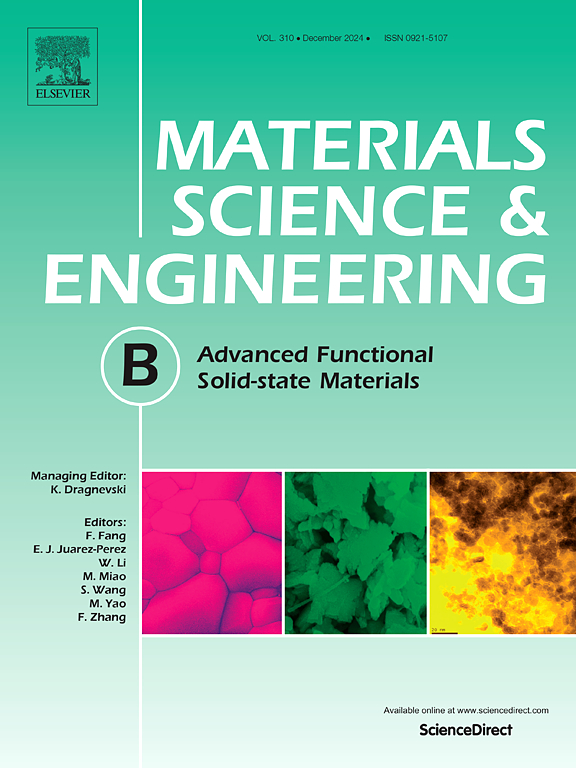用Co2GeO4/介孔石墨氮化碳(g-C3N4)异质结快速光催化降解有机染料
IF 3.9
3区 材料科学
Q2 MATERIALS SCIENCE, MULTIDISCIPLINARY
引用次数: 0
摘要
偶氮染料如MB、CV等在纺织工业中有着广泛的应用。它们排放到环境中会产生有毒的副产品,例如危害水生生物和对人类健康构成威胁的副产品。本研究的重点是利用低成本水热法制备一种新型异质结型光催化剂,该催化剂由Co2GeO4和介孔石墨氮化碳(m-g-C3N4)组成,用于亚甲基蓝(MB)和结晶紫(CV)的快速降解。Co2GeO4/m-g-C3N4异质结为II型异质结,带隙为2.39 eV,对可见光有响应。优化后的异质结光催化剂通过促进有效的电荷分离和转移、延长光谱响应和改善电子-空穴对分离,显著提高了光催化活性。该反应可降解95.5%的亚甲基蓝和95%的结晶紫染料。进行了可重用性测试,该材料在可重复使用的四个周期内表现出良好的稳定性。本研究确定了Co2GeO4/m-g-C3N4异质结光催化剂是可持续废水处理的有效选择。本文章由计算机程序翻译,如有差异,请以英文原文为准。
Rapid photocatalytic degradation of organic dyes using Co2GeO4/ mesoporous graphitic carbon nitride (g-C3N4) heterojunction
Azo dyes, such as MB and CV, are widely used in the textile industry. Their discharge into the environment causes poisonous by-products, such as those that harm aquatic life and pose health risks to human beings. The focus of this research is on a new heterojunction-based photocatalyst made up of Co2GeO4 and mesoporous graphitic carbon nitride (m-g-C3N4) fabricated via a low-cost hydrothermal method for rapid degradation of Methylene blue (MB) and crystal violet (CV). The Co2GeO4/m-g-C3N4 heterojunction shows a type II heterojunction with a bandgap of 2.39 eV, making it responsive to visible light. The optimized heterojunction photocatalyst significantly enhances photocatalytic activity by facilitating efficient charge separation and transfer, extending spectral response, and improving electron-hole pair separation. The reaction degrades 95.5 % of Methylene Blue and 95 % of Crystal violet dyes. Reusability tests were conducted, and the material exhibits good stability up to four cycles of reusability. The research establishes Co2GeO4/m-g-C3N4 heterojunction photocatalyst as an effective option for sustainable wastewater treatment.
求助全文
通过发布文献求助,成功后即可免费获取论文全文。
去求助
来源期刊

Materials Science and Engineering: B
工程技术-材料科学:综合
CiteScore
5.60
自引率
2.80%
发文量
481
审稿时长
3.5 months
期刊介绍:
The journal provides an international medium for the publication of theoretical and experimental studies and reviews related to the electronic, electrochemical, ionic, magnetic, optical, and biosensing properties of solid state materials in bulk, thin film and particulate forms. Papers dealing with synthesis, processing, characterization, structure, physical properties and computational aspects of nano-crystalline, crystalline, amorphous and glassy forms of ceramics, semiconductors, layered insertion compounds, low-dimensional compounds and systems, fast-ion conductors, polymers and dielectrics are viewed as suitable for publication. Articles focused on nano-structured aspects of these advanced solid-state materials will also be considered suitable.
 求助内容:
求助内容: 应助结果提醒方式:
应助结果提醒方式:


